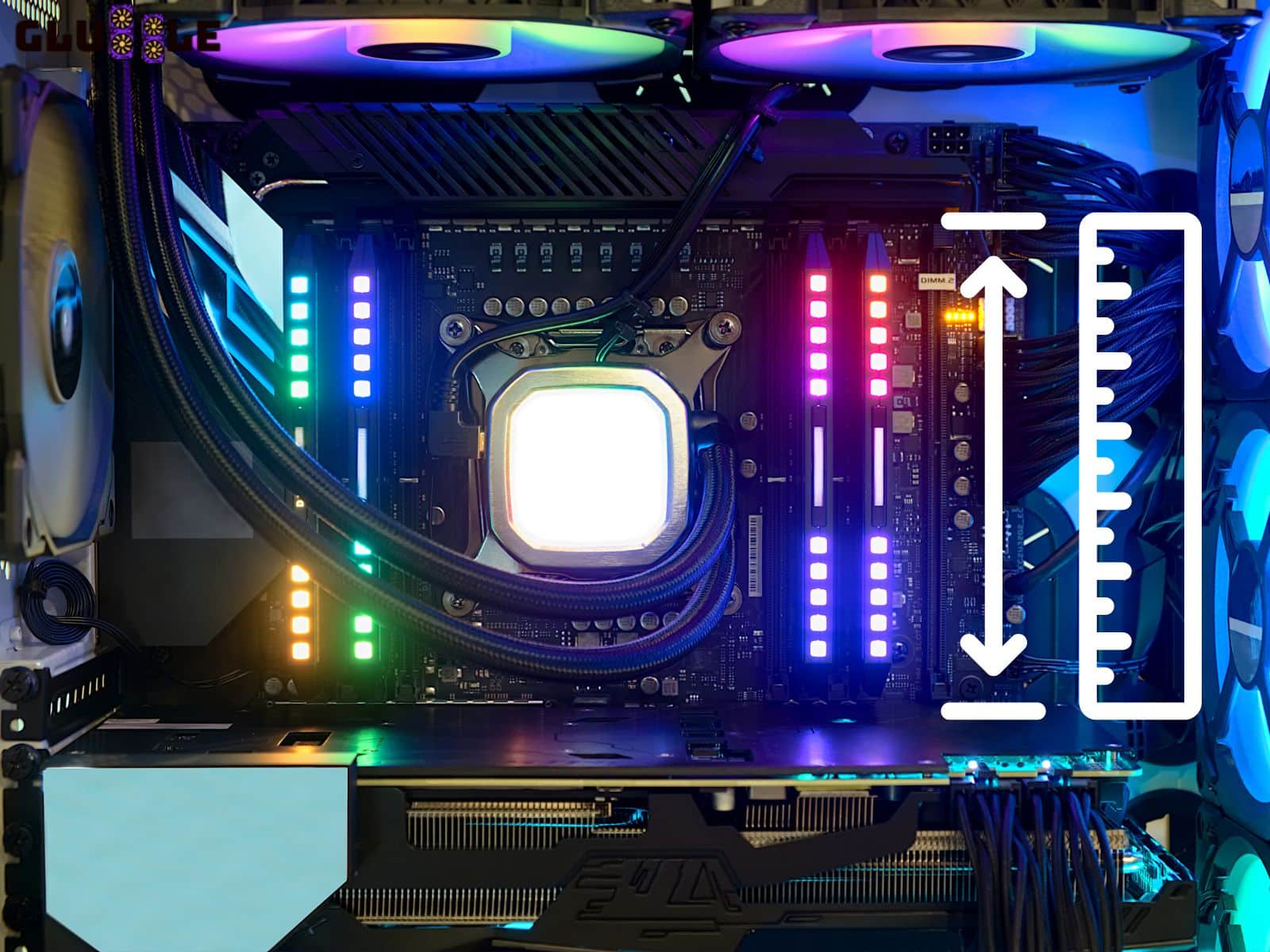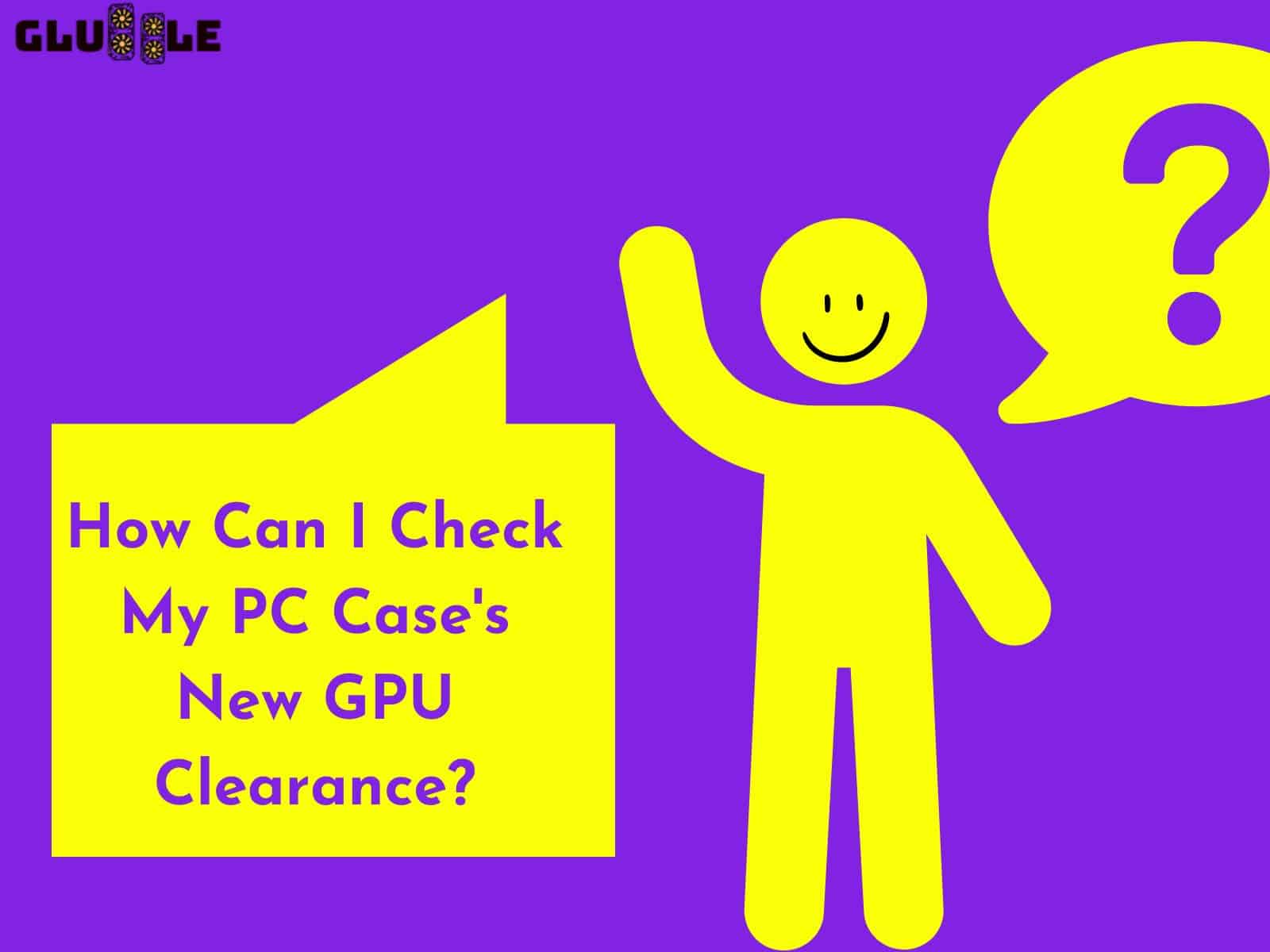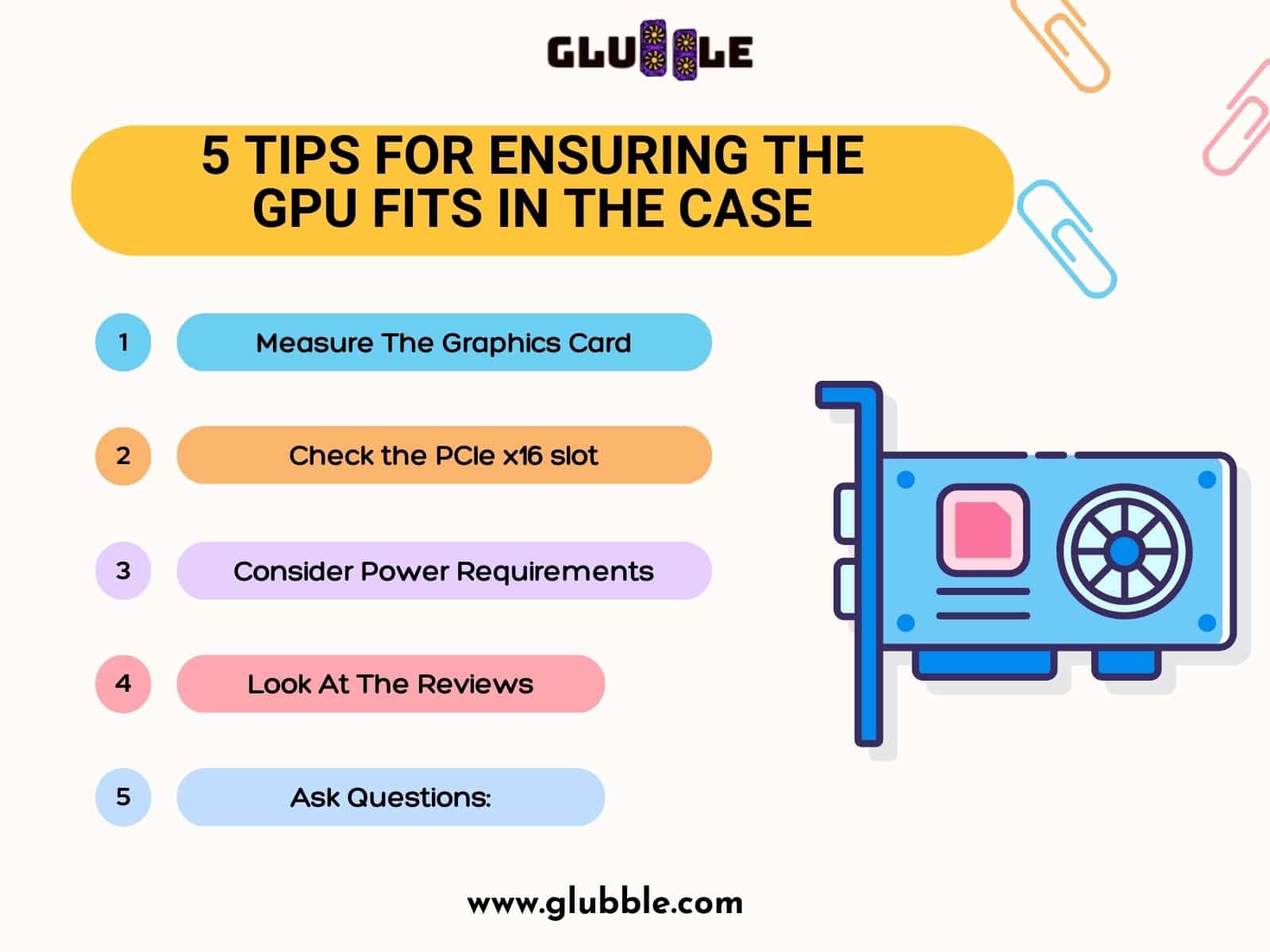To determine if your GPU will fit in your case, you need to check the maximum GPU length and clearance specifications of your case and compare them with the dimensions of your GPU. If the length and clearance of your GPU are within the maximum specifications of your case, then your GPU should fit without any issues.
Are you looking to upgrade your gaming PC but don’t know if your graphics card (GPU) will fit in the case? Don’t worry, you’re not alone. Many people find themselves asking, “Will my GPU fit in my case?” and the answer may be very interesting. With the right knowledge and resources, you can easily determine whether your GPU will fit in your case.
In this informative article, I’ll explore the various ways to measure and check if your GPU will fit in the case you’re going to buy, provided it is within the manufacturer’s limitations for that case. You should also consider any other hardware components, such as hard drives or other cooling systems, when choosing a case.
Make sure that you double-check whether or not the GPU will fit in your case before making your final purchase. This will save you from experiencing any unwanted surprises and allow you to get the most out of your PC build.
What Does GPU Clearance Mean?

GPU clearance is an important factor to consider when choosing a PC case. It determines whether the graphics card you want will fit in your computer. The clearance refers to the length of the GPU and the amount of power it requires from the PCIe x16 slot.
Most NVIDIA RTX cards are around 11 inches in length, so the case needs to be at least that size to ensure the GPU will fit in your case. You should also make sure that your case has enough room for any additional components you may need, like extra fans.
By checking the GPU clearance, you can ensure that your GPU will fit in your case.
How Can I Check My PC Case’s New GPU Clearance?

When it comes to buying a new graphics card, one of the most important considerations is whether or not the GPU will fit in your case. To make sure you don’t end up with a graphics card that won’t fit in your case, you’ll need to measure the length of the GPU you want and compare it to the clearance of your PC case.
The first step is to measure the length of the GPU you want and then check the specifications of your PC case. The maximum length of graphics cards that can fit in the PCIE x16 slot is listed on most PC cases. You can also check for information about the amount of power available for the graphics card, which will also determine whether or not it will fit in the case.
Once you’ve measured the length of the GPU and checked the specifications of your case, you can get an idea of whether or not the GPU will fit in your case. If it doesn’t, you can look for alternative GPUs that would fit in your case or look for another PC case that has more clearance.
Here’s a table that outlines the normal graphics card sizes and the PC case sizes that they typically fit in:
|
Graphics Card Size |
PC Case Size |
|
Mini (6.7 inches) |
Mini-ITX |
|
Compact (8.2 inches) |
Micro-ATX |
|
Standard (9.7 inches) |
ATX |
|
Full-size (10.5-11 inches) |
E-ATX or larger |
It’s important to note that some graphics cards may require additional space due to their cooling systems, so it’s best to check the specifications of both your PC case and GPU before making a purchase. This will make sure that the GPU you pick will fit in your case and give your system enough cooling.
Read more: Will My GPU Fit In My Case?- How to know if a GPU is compatible or Not?
- Can A Graphics Card Be Too Powerful For A Motherboard?
- What are Graphics Card Slot Types?
Factors To Consider When Checking The Specifications
When it comes to making sure that the graphics card you want will fit in your case, there are a few things you need to consider.
A. Length and clearance of the GPU
The length of the GPU is the distance between the front and back of the graphics card. The clearance of the GPU is the amount of space needed between the graphics card and other parts in the case, like the power supply or hard drives. It is important to check both the length and clearance of your GPU to ensure that it will fit in the available space in your case.
B. Width of the GPU
The width of the GPU refers to the distance between the top and bottom of the graphics card. Some graphics cards are wider than others, and you need to make sure that the width of your GPU will fit within the available space in your case.
C. Number Of PCIe Slots In The Case
The number of PCIe slots in the case refers to the number of expansion slots on the motherboard where you can install your GPU. It is very important to make sure that your case has enough PCIe slots to fit your GPU.
D. Compatibility With The Power Supply
Your computer’s power supply unit (PSU) gives power to all of its parts, including the GPU. It is important to make sure that your PSU works with your GPU and can supply enough power to meet the needs of the graphics card. The specifications of your GPU and PSU will tell you how much power is required, and you need to make sure that your PSU has the necessary power connectors to support your GPU.
5 Tips For Ensuring The GPU Fits In The Case

When building a PC, it’s important to choose the right GPU for the best performance when gaming or doing other graphics-intensive tasks. But it’s just as important to make sure that the GPU you choose fits well in the case so that you don’t have any trouble installing it.
Here are some tips that will help you ensure your GPU fits perfectly in the case and avoid any headaches during the building process.
1. Measure The Graphics Card:
To make sure your GPU will fit in the case, measure the length of the graphics card you want to purchase and compare it to the length of your PC case’s internal dimensions. This will give you a better idea if the card will fit inside or not.
2. Check the PCIe x16 slot:
If your GPU fits in the case, then you should also make sure that the PCIe x16 slot is available for installation. In some cases, the GPU may physically fit, but the PCIe x16 slot may be full or too short for the graphics card.
3. Consider Power Requirements:
Before making a decision to buy, you should also think about how much power your GPU needs. Some GPUs require more power than your PC’s power supply can provide. Make sure you have an adequate power supply to accommodate your graphics card.
4. Look At The Reviews:
It’s always a good idea to look at reviews of different cases to see if anyone has had problems fitting their GPU in a certain case. This will give you get an idea of what other people think of the size and compatibility of different PC cases.
5. Ask Questions:
If you’re unsure about anything, don’t hesitate to ask questions. Contact customer support for the PC case manufacturer or ask someone with experience in building PCs if they have any advice on whether the GPU you want would fit in your case or not.
- Top 25 Brand Strategists To Work With This Year
- Best Personal Branding Agencies for Executive Leaders in 2025
- Hire These Personal Branding Agencies for Personal Websites
- Established Personal Branding Experts in 2025
- Top Brand Strategy Workshops to Attend in 2025
